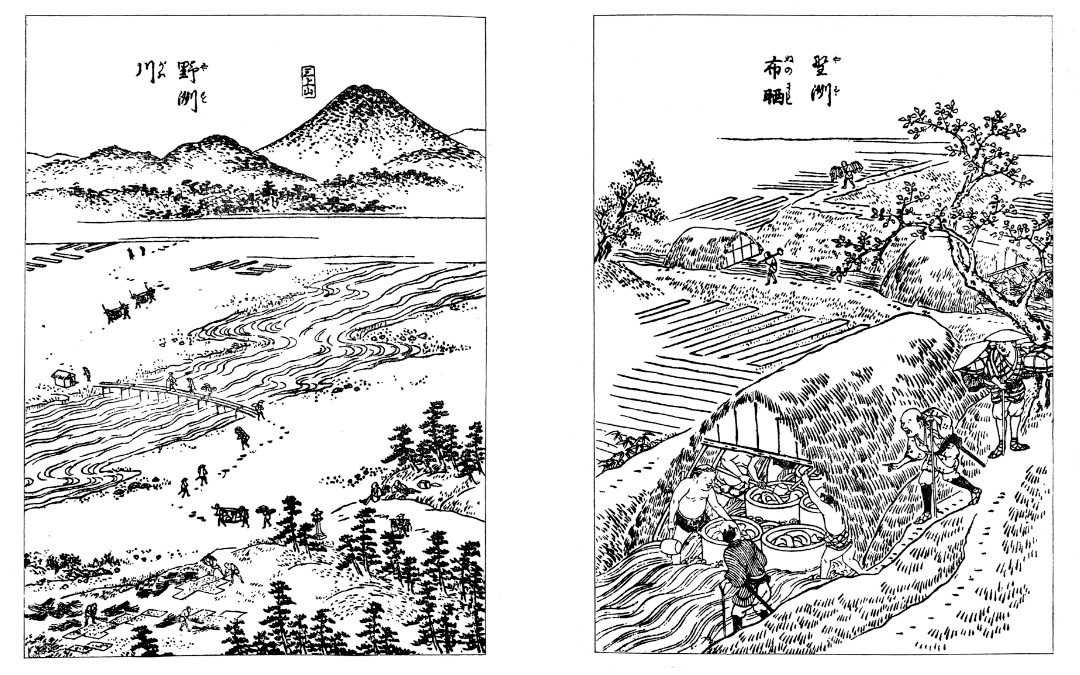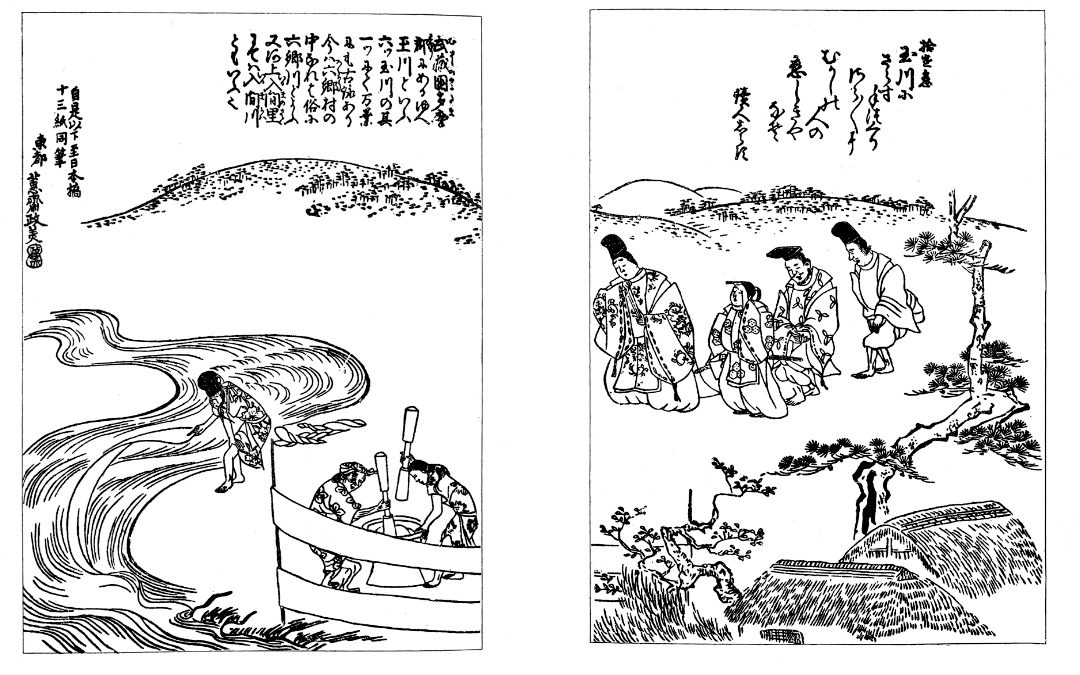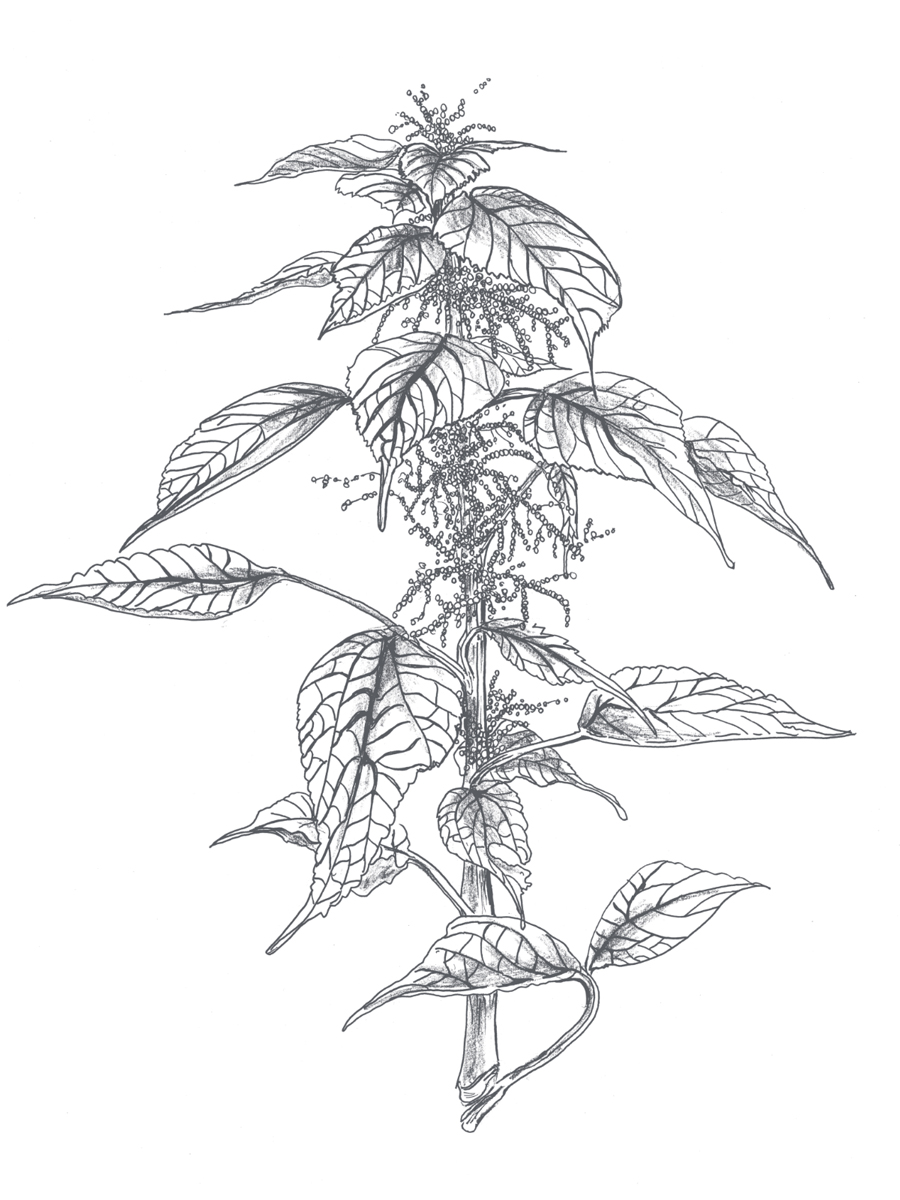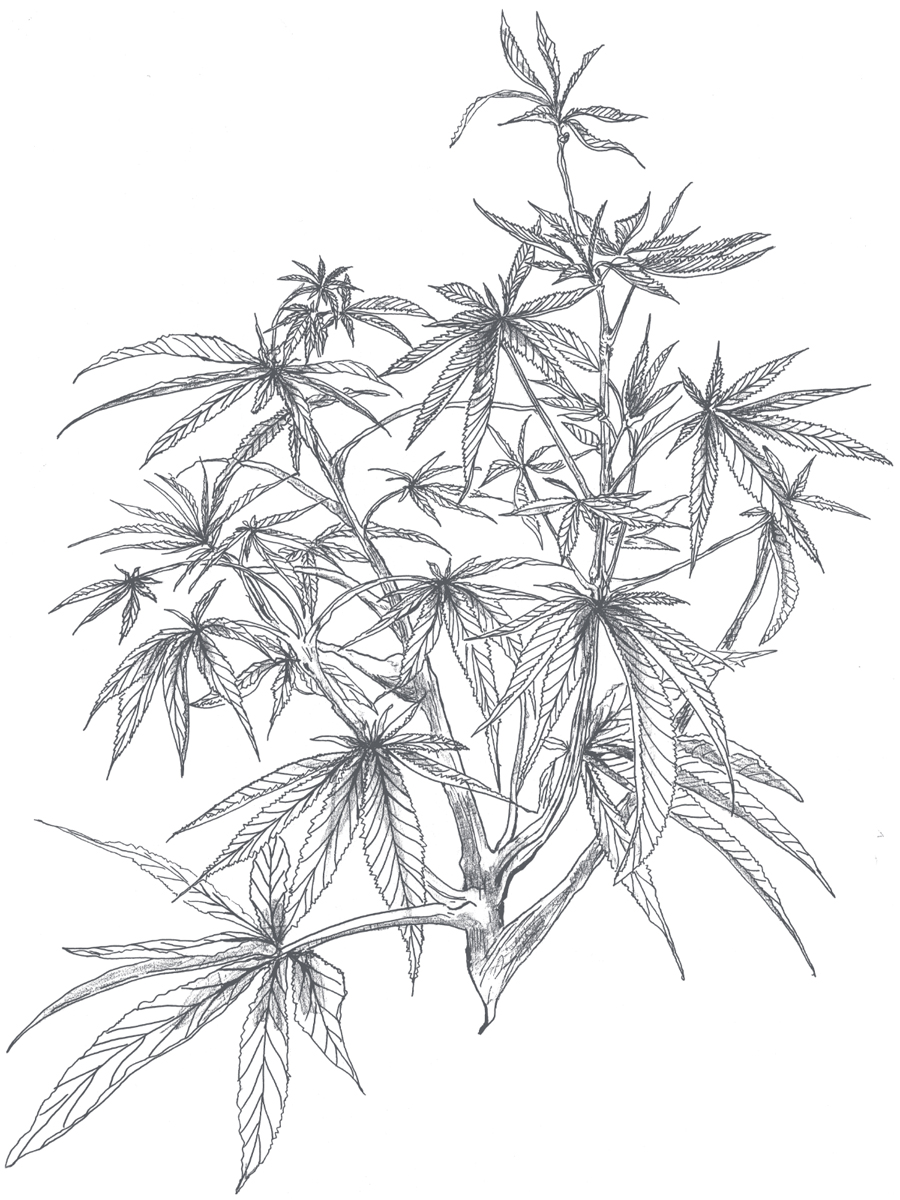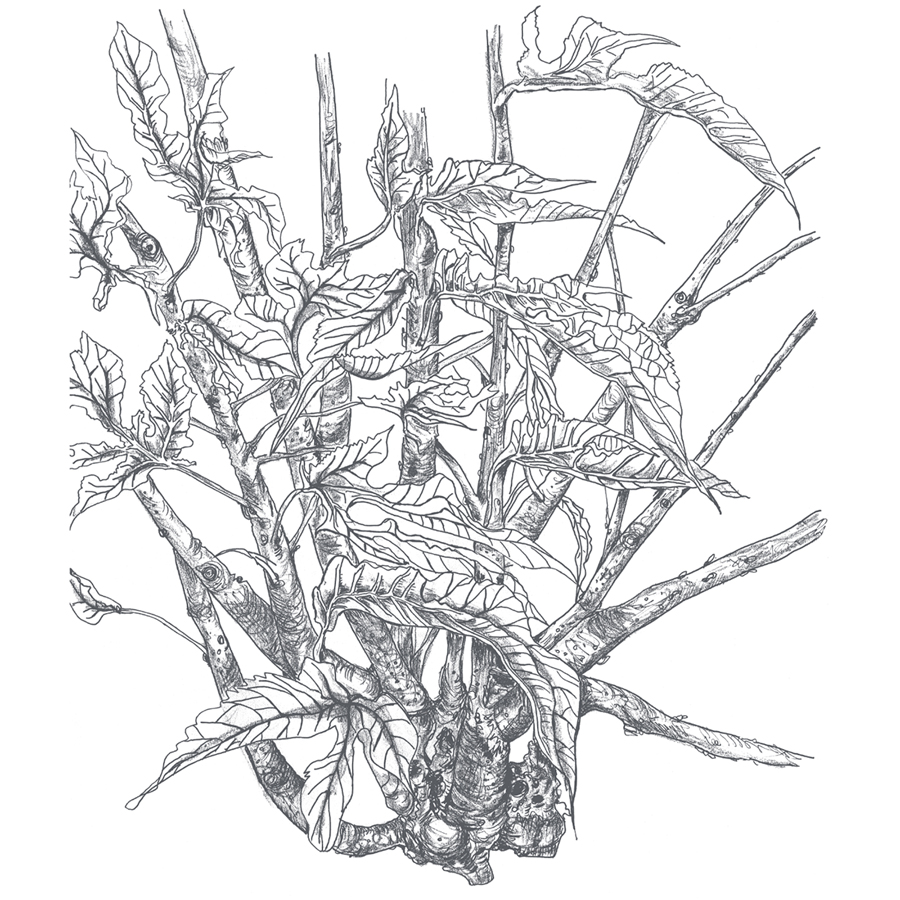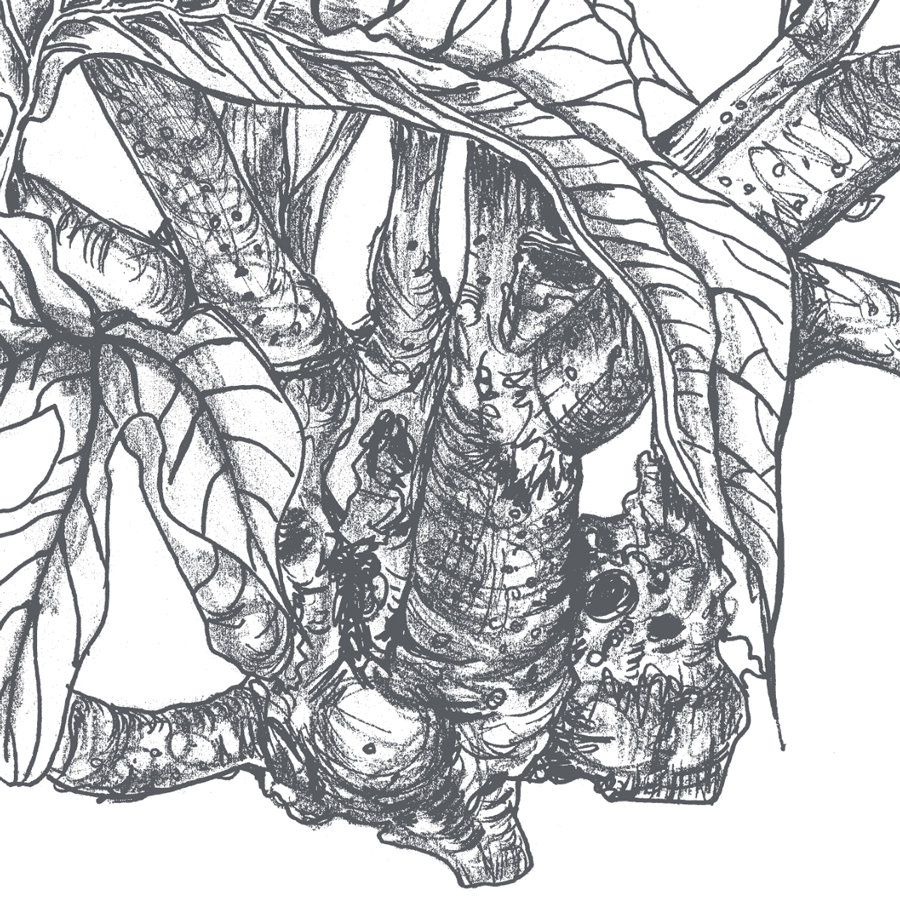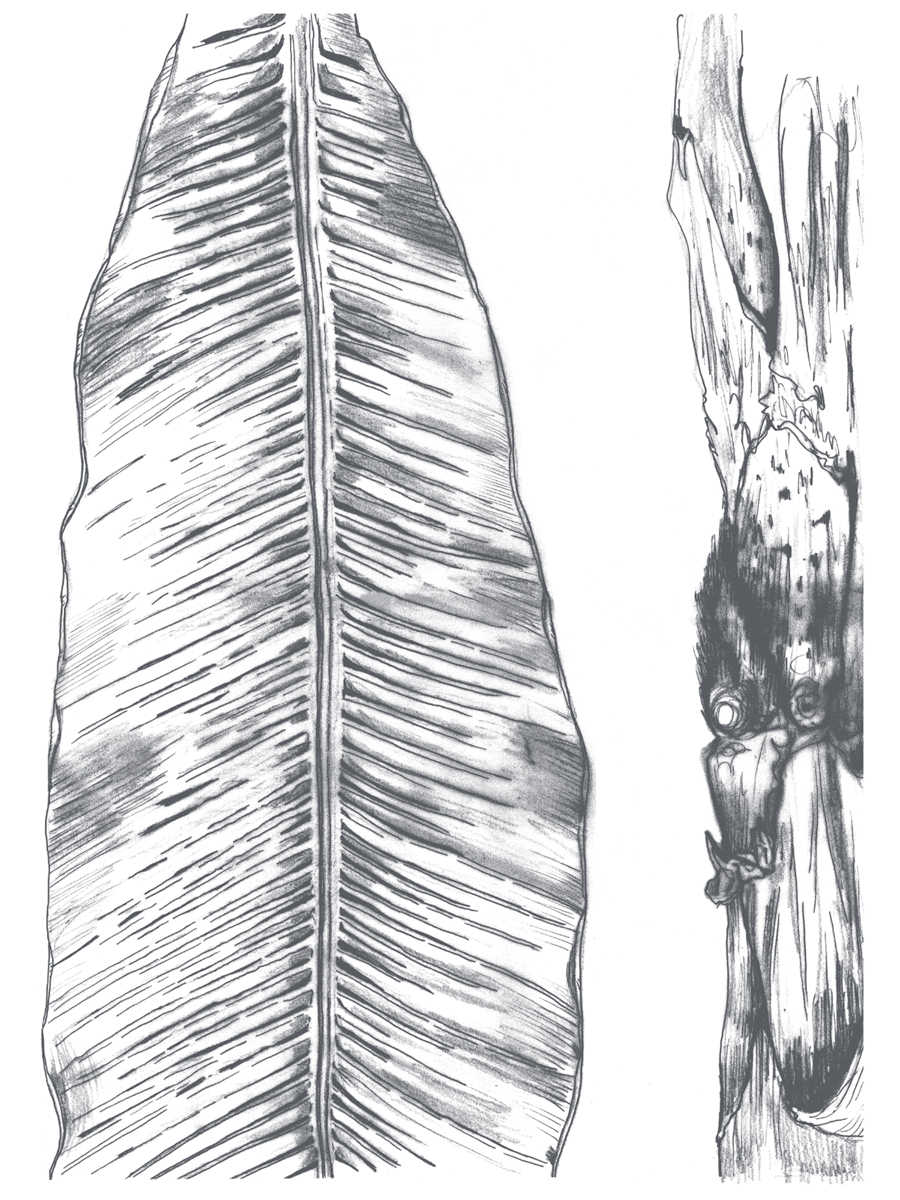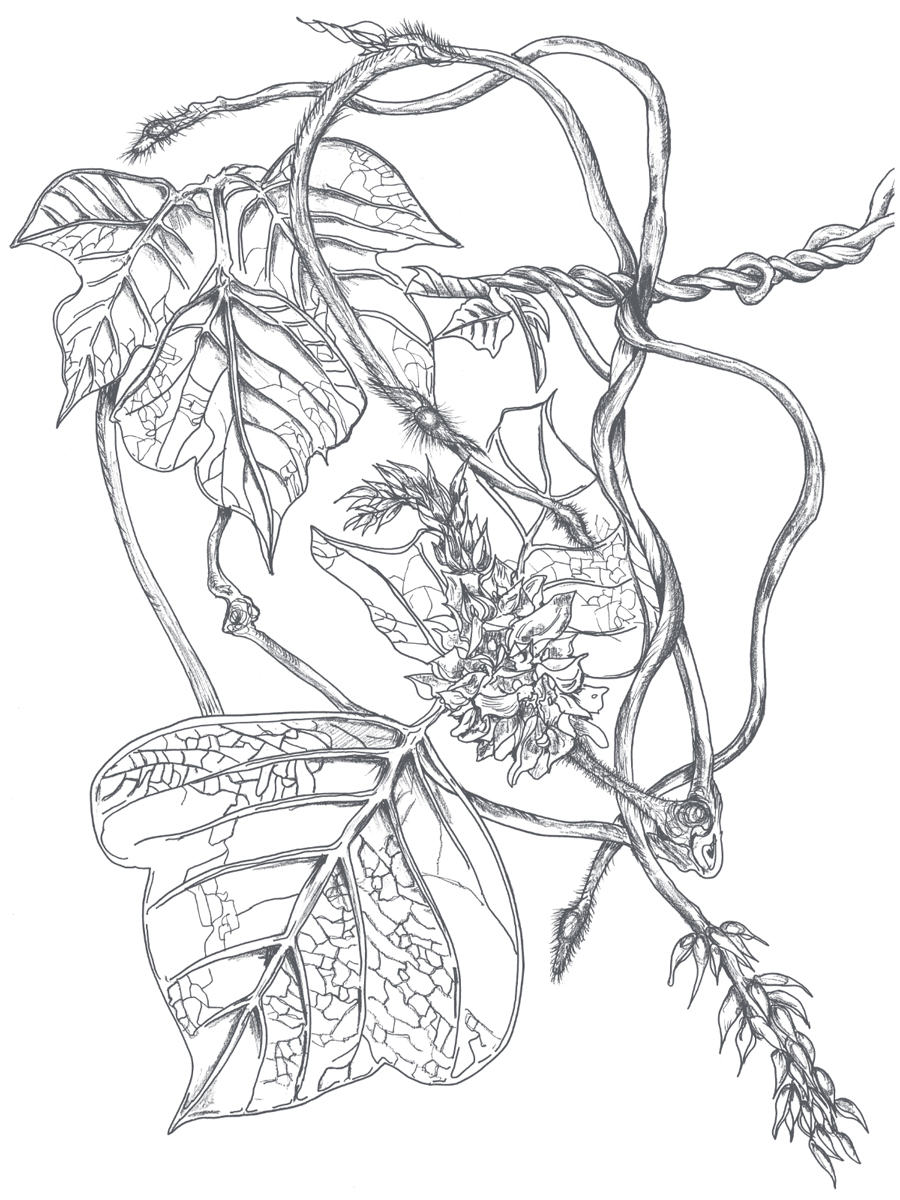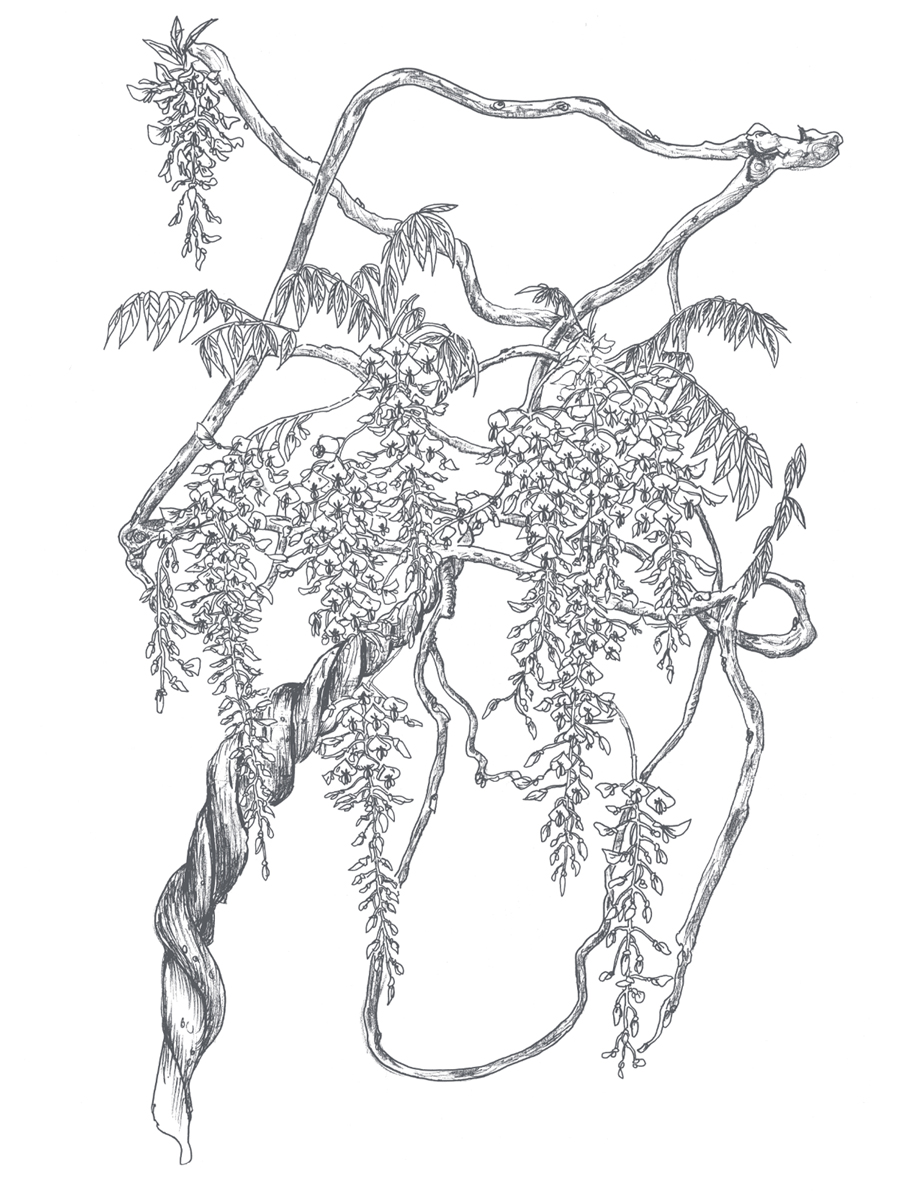Necessaries of life
衣・食植・住
Clothing, Food, Plant, and Shelter
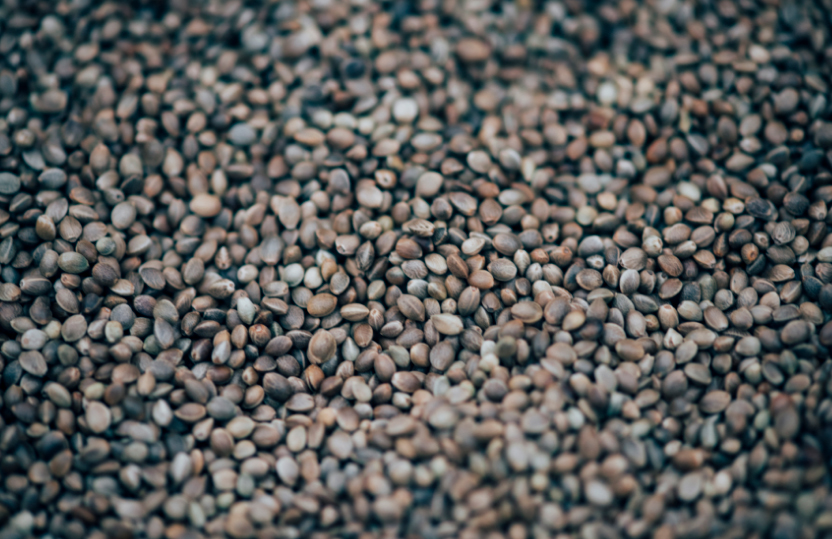
Cloth born from plants get “better” with “wear.”
This message from the past was such an inspiration for us.
The essentials of our lives as humans.
As we learned about “clothing” born from plants, we realized that there is no such thing as order of priority when it comes to “clothing, food, and shelter.”
Not one can be missing and all are equally important.
They were plants before becoming a dish or before becoming a bouquet.
Everyone knows that. But like our ancestors before us, we want to learn how we can use every single part of a plant.
We want to continue asking ourselves how we can take something that is about to be discarded and see it not as having served its purpose but see them through a fresh set of eyes and think how we can give it another new life.
The word “mottainai” should always be used as a gesture of thanks.
A new word that could replace this emotion could be, “SDGs”.
We consider it our personal SDGs rather than a goal set by the larger society.
We live today, surrounded by the infinite wisdom that our ancestors garnered so that they can bring more goodness to their lives.
We thank this mindboggling chain of time.
And so we hope to preserve that unbroken chain and do our part in creating a livelihood brimming with gratitude and a life that gets better with time.
植物から生まれた布たちは、「劣化」しながら「良化」していく。
それは、私たちの胸に大きく響いた過去からのメッセージだった。
人が生きていくために必要不可欠なもの。
植物から生まれた「衣」のことを学んでいくうちに、「衣・食・住」に優先順位などないのだと気がついた。どれかひとつが欠けてもいけない、どれも等しく大切なものだ。
料理である以前に、装花である以前に、植物であること。
当然といえば当然だけれど、先人たちのように、植物まるごとを余すことなく生かし切る力を身につけていきたい。捨てるもの、役目を終えたものだと決めつけず、いつもまっさらな眼で、何か新しいものに蘇らせることができないかと、自分に問い続けたい。
“もったいない” という言葉は、いつも“ありがたい”の表れでありたい。
この気持ちを最近の言葉に置き換えるなら、SDGsなのかもしれない。
社会の目標である前に、自分の目標としてのSDGs。
先人たちが、生きるために編み出してきた数々の知恵に囲まれた今がある。
その途方もない時の連なりに感謝。
これからの生活を感謝で埋め尽くしていけるような、良化していく人生を描いていきたい。
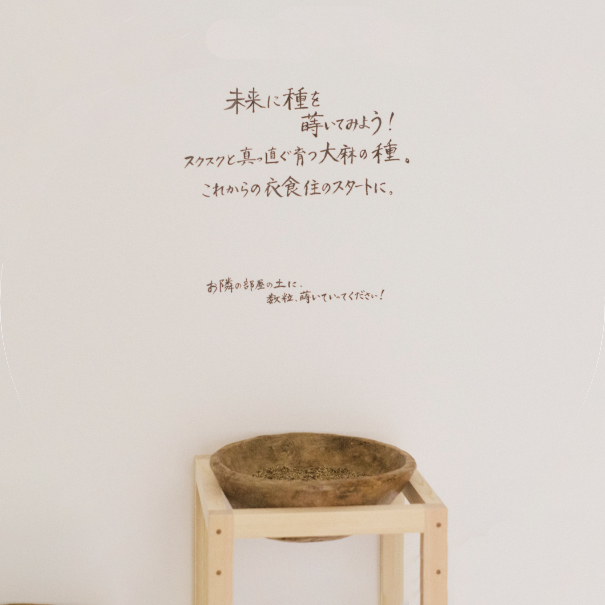
「麻世妙」から学んだこと
The teachings of “majotae”
Life is beautiful
大麻布の特性が大いに発揮できて、毎日の家事仕事に使えるようなものがつくりたい。そんな思いから、野村友里と壱岐ゆかりのプロジェクト「Life is beautiful」が、「麻世妙」の生地をもとに製作したのが、この割烹着です。いつも仕事の際にはエプロンを着用している二人ですが、割烹着なら、作業時にも袖が汚れず、肩全体に羽織るので首の負担も少なく、衣服をカバーするので毛屑がでる心配もない。「麻世妙」は、やわらかく仕立てられた生地ですが、使い込むほどさらにやわらかく馴染み、包まれる安心感も増していくと考えました。
We wanted to create something that showcases the characteristics of hemp cloth in its entirety while also being usable for daily work around the house. The first item that the “Life is beautiful” project by Yuri Nomura and Yukari Iki created with “majotae” cloth was the Kappougi (coverall apron.) As both women wear aprons on a daily basis at work, a Kappougi keeps sleeves protected, the coverall wraps around the entire shoulder which means less weight on the neck, and it also keeps loose hairs and lint on one’s clothes under the covers. “majotae” is a soft cloth but it becomes even softer with use and hugs the wearer with a sense of security.
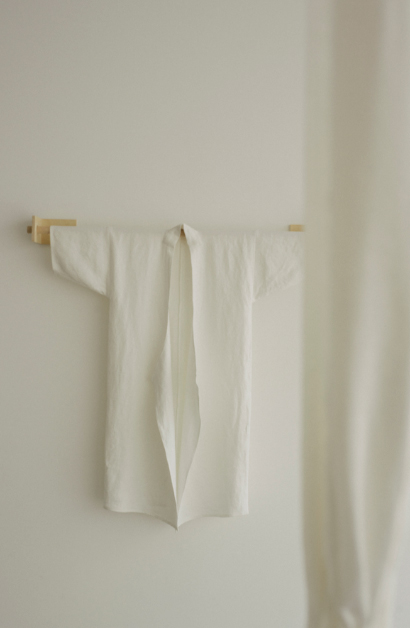
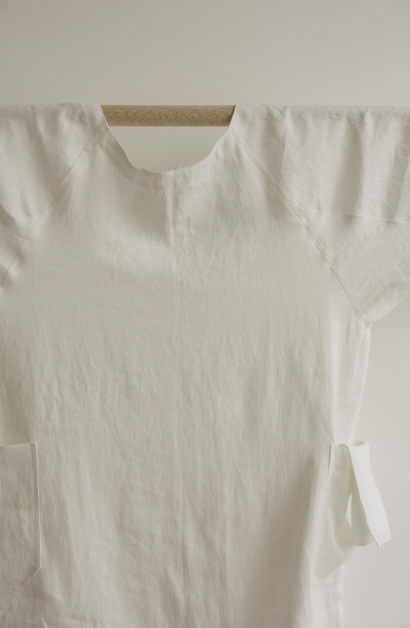
麻世妙
Majotae
機能性においては木綿を凌ぐほどの大麻布が、日本でなぜつくられなくなってしまったのか。その理由には、第二次世界大戦後に国内での栽培が規制されてしまったことと、大麻繊維は紡績するのが難しく、工業化に乗り遅れてしまったことが挙げられます。これを、現代の最新紡績技術で糸にし、布に仕立てたのが「麻世妙 majotae」です。大麻繊維のみを使うことで、古大麻布がもつ独特のやわさかさも再現。シンプルな平織物から綾織物、ニットまで、さまざまな大麻布がつくられています。
Hemp outshines cotton when it comes to functionality but its production was halted for years in Japan due to the suspension of domestic hemp cultivation after World War II, coupled with the delay in industrialization due to the difficulty of spinning hemp into thread. “majotae” succeeded in re-creating the softness and texture of ancient hemp cloth through state-of-the-art spinning technology. From plain woven fabric to twill fabric and knits, a variety of hemp cloths are being made.
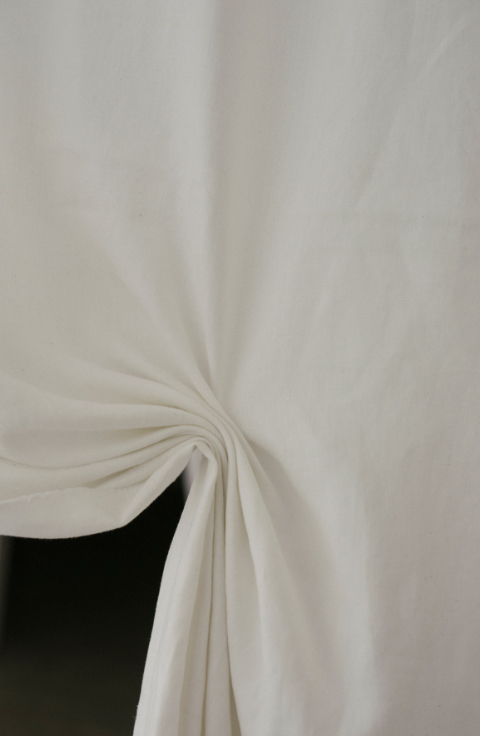
Is it possible to know hemp cloth inside and out and create one as (mass produced) daily wear instead of handcrafted artisan cloth? This question led to extensive research of modern spinning techniques and the creation of “majotae”, a cloth that offers a look and texture that is similar to artisan work.
However, this is apparently only the beginning.
The completion of the product is not the end. Instead, ancient techniques are recreated first-hand and manufacturing methods are researched meticulously to seek out hints on how they can be brought to life in a modern context. All this in order to move the needle of evolution toward an industrial product that does good for the future of our planet.
Handwork and mass production, there is no right or wrong and the key is in uncovering a way that blends the benefits of the two in a way that is suited for the future. This mindset of “majotae” is what the future of product making needs.
大麻布を知り尽くした上で、すべてが手仕事の工藝品のような布ではなく、日常着(量産品)として着られる大麻布がつくれないだろうか。そこから、現代の紡績技術をもとに研究を重ね、手仕事に近い風合いを再現させたのが「麻世妙majotae」。
だけど「これは完成形ではなく、はじまり」なのだという。
製品化を完成とせず、あえて古来のつくり方を自分たちの手で再現してみるなど、かつての製法をとことん研究し、今に生かせる手がかりを見出そうとしている。すべては、これからの地球環境に即した工業製品へと進化していくために。
手仕事と機械生産、どちらが良い悪いではなく、この両方の良さをブレンドして未来に合う方法を見出していく。この「麻世妙」の姿勢は、これからのものづくりすべてに必要なこと。
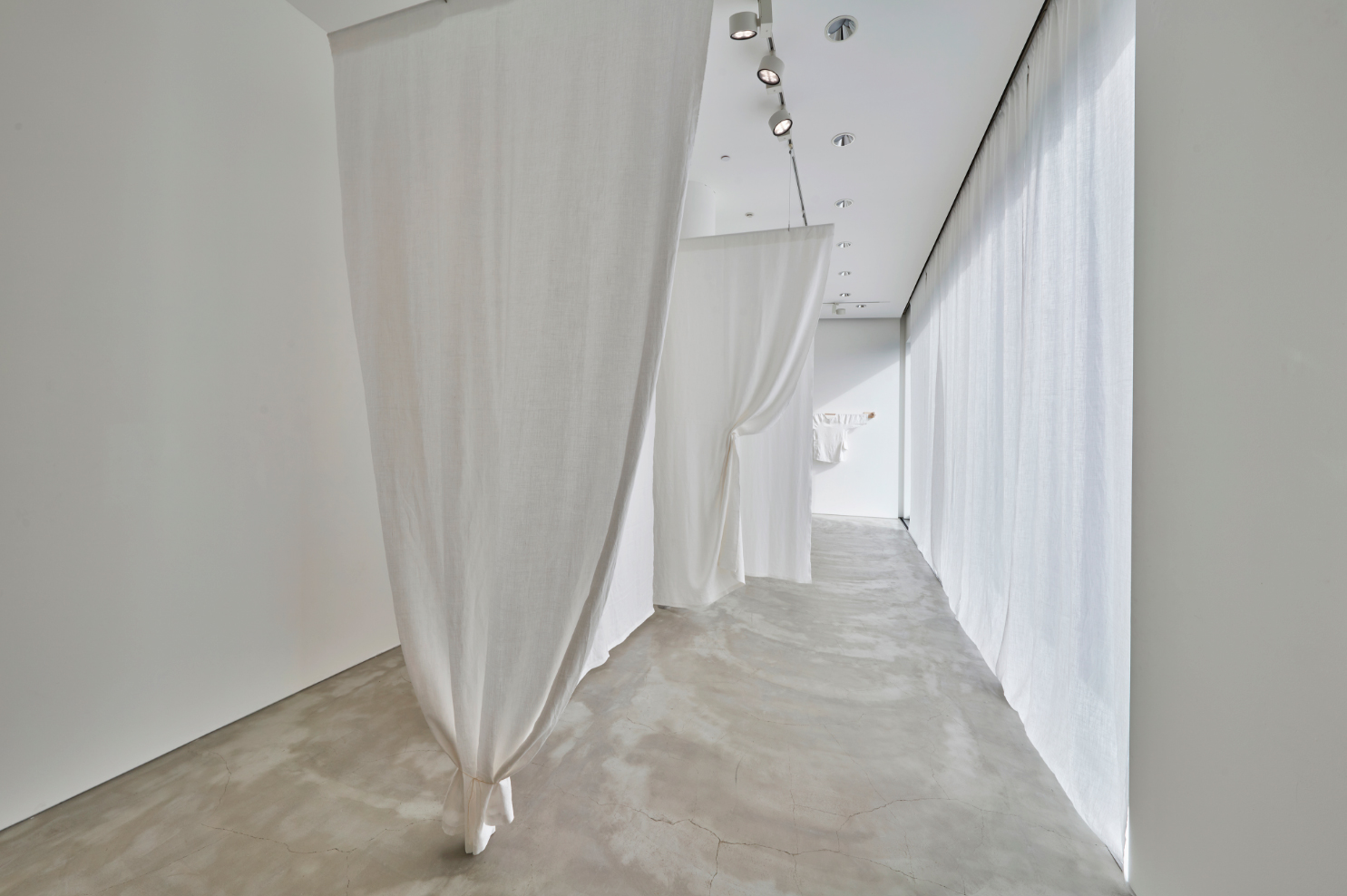
大麻布は、使うほど良化していく
Taima-fu gets better with use
グングン伸びる
Fast grower
やせた土地や乾燥地帯でも、農薬も化学肥料も必要なく、少ない水分でたくましく育つ大麻。100〜120日で3〜4メートルも、グングン成長する。そして、土にも根を張り巡らせるので、土がふかふかになっていく。
Hemp thrives even in poor soil, arid regions, and without neither chemicals nor fertilizers. It is also a fast grower that reaches 3-4 meters in 100-120 days. It’s robust root system also helps soften the soil.
ものすごく丈夫
Super durable
植物からつくられた糸の中でも、特に強靭なのが麻。さらに水に濡れると強度アップ。薮の中へ入っていくような仕事の時は、下ろしたてゴワゴワの大麻布を着て身を守り、使い込んでやわらかくなった大麻布は日常着へと、何年も何年も使っていた。
Of the different plant derived threads, hemp is outstandingly durable. It becomes even stronger when exposed to water. When working in the bush, the new and coarse hemp cloth serves as protection while worn hemp cloth was suited for daily wear and worn for many many years.
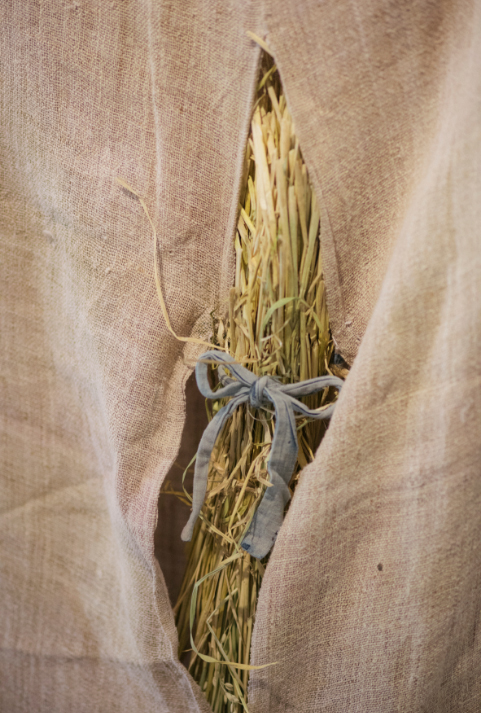
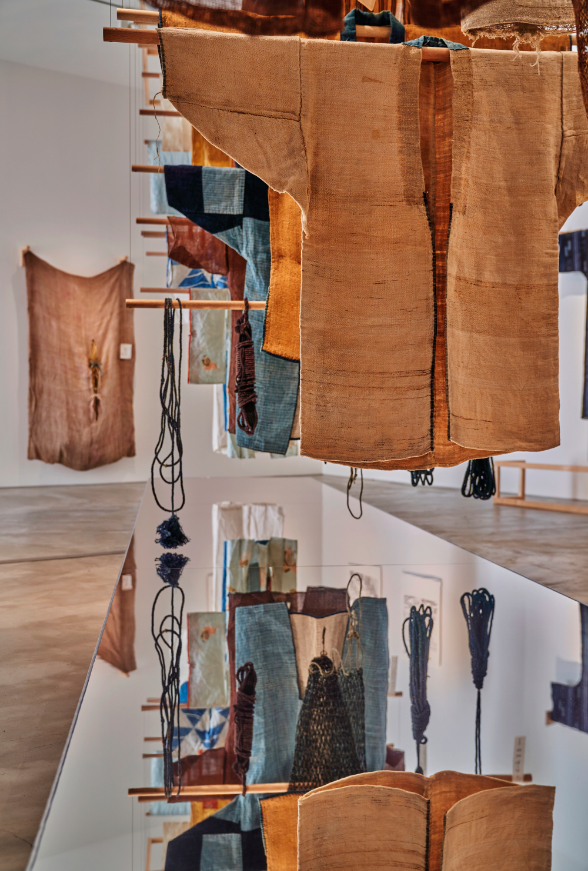
夏は涼しく、冬は暖かく
Cool in summer, warm in winter
「麻は夏の布」と思っていた。それ自体は正解! けれど、大麻は保湿性も備えた繊維。冬には断熱効果を発揮してくれるのだ。古くは、一年中着られている日常着だった。
We thought “hemp=summer cloth.” Which is not exactly wrong. However, hemp is also a fiber that retains moisture and insulates heat during winter. In the past, it was daily wear worn year-round.
“ゴワゴワ”が、どんどんなめらかに
Stiff and coarse becomes soft and smooth
いつからか「大麻布は、硬くてゴワゴワ」というのが定着してしまったけれど、実際には、使い込むほどなめらかにやわらかく“良化”していく。
The image of hemp cloth as being coarse and stiff goes back as far as we can remember when in actuality, it gets smoother, softer, and “better” the more it’s worn.
大麻布とは—
神秘的で日常的。
精神的で機能的。
当時の植物布の中でも、びっくり大発見だったのが大麻布だった。その話を聞くほどに、私たちが「麻」という素材に抱いていたイメージとはぜんぜん違うものだとわかってきた。たくさんの機能性と、神の宿る植物としての精神性、両方を併せ持っている—それが、大麻布。
Taima-fu is…
Sacred yet ordinary.
Spiritual yet practical.
Of all the plant-derived cloths of the past, hemp cloth was the most extraordinary discovery of all. The more we learned about it, the more we realized how far it was from our preconceived ideas of “hemp.” Taima-fu is a cloth that is endlessly practical yet spiritual as in a plant that God dwells in.
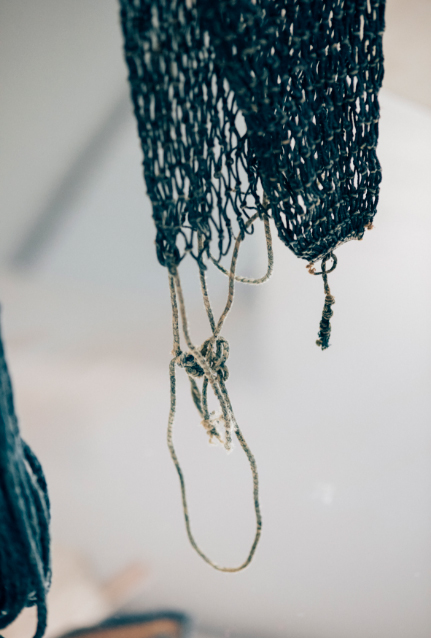
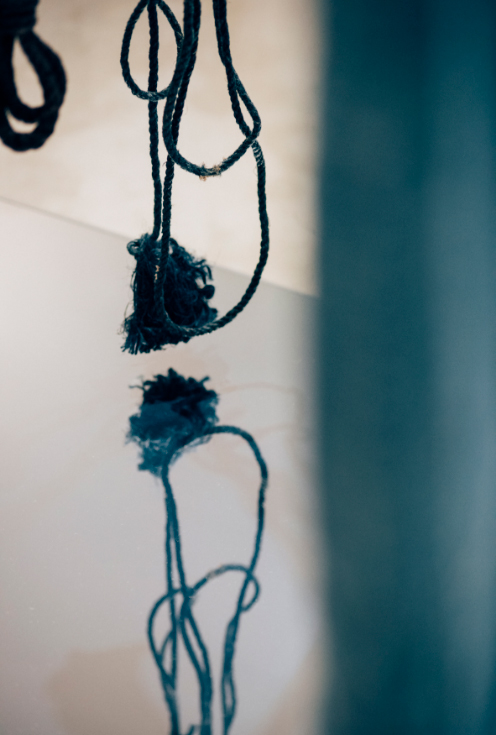
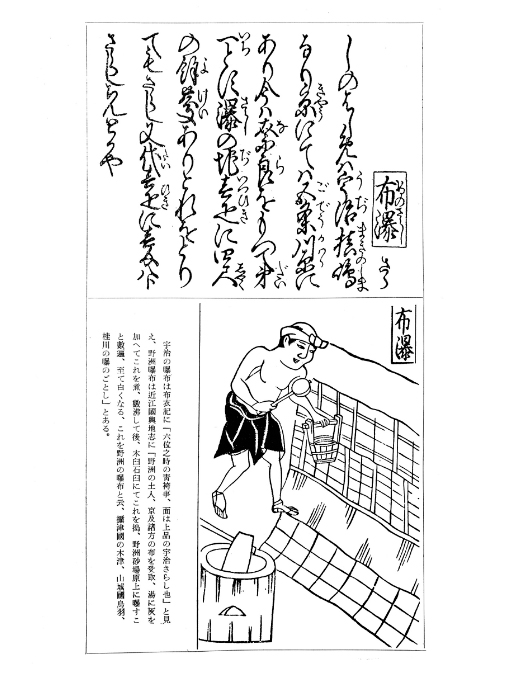
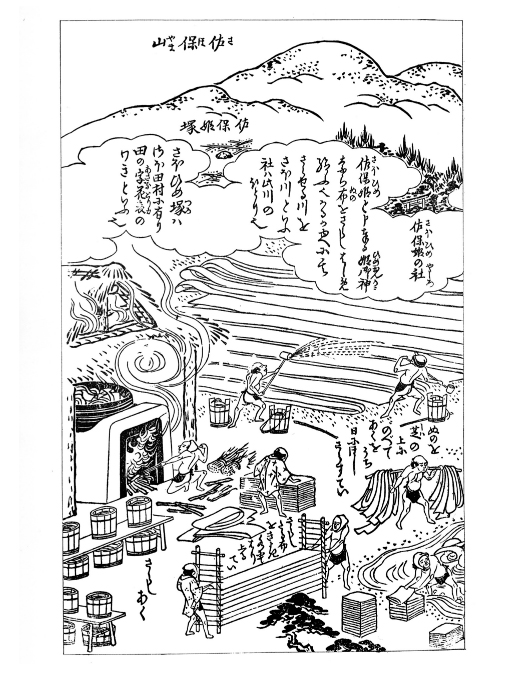
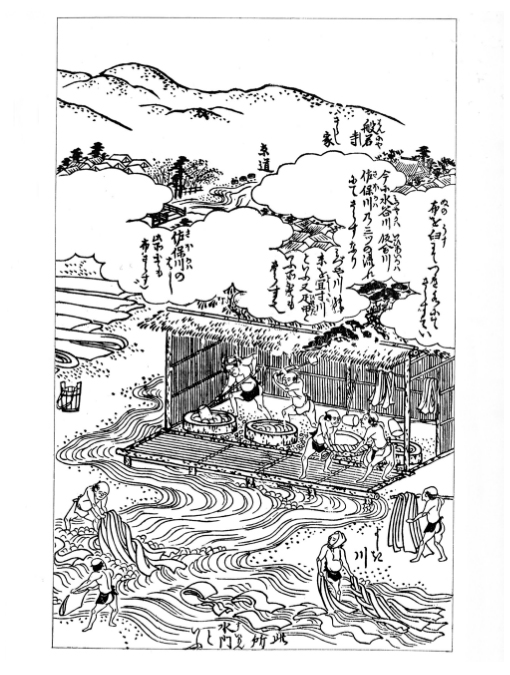
| 右 | 『日本山海名物図会』奈良晒 江戸時代後期(1754年)刊 |
| 中 | 『南都布さらし乃記』奈良の布晒 江戸時代後期(1789年)刊 |
| 左 | 『人倫訓蒙図彙』布瀑 江戸時代前期(1690年)刊 |
| Right | “Nihon Sankai Meibutsu Zue (Illustrated Famous Products of the Mountains and Seas of Japan)” Nara Sarashi (high-quality hemp fabric) late-Edo Period (1754) |
| Middle | “Nanto Nuno Sarashi no Ki (Nanto Encyclopedia of Fabrics)” High quality hemp fabric made in Nara, late-Edo Period (1789) |
| Left | “Jinrin Kinmo Zui (An Illustrated Encyclopedia of Humanity)” Sobuku early-Edo Period (1690) |
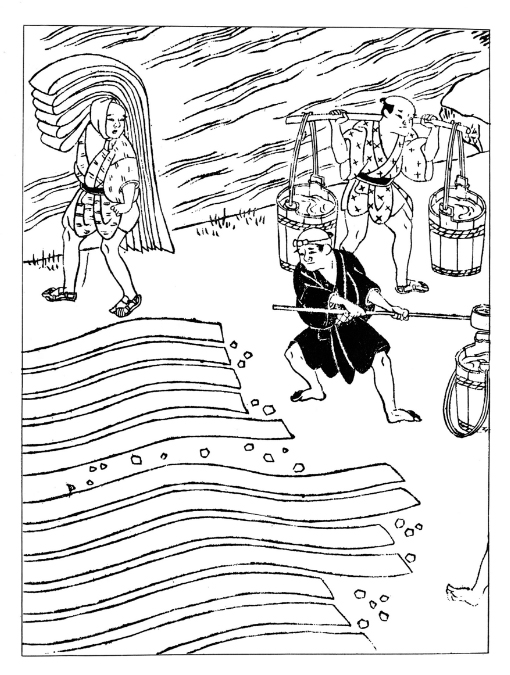
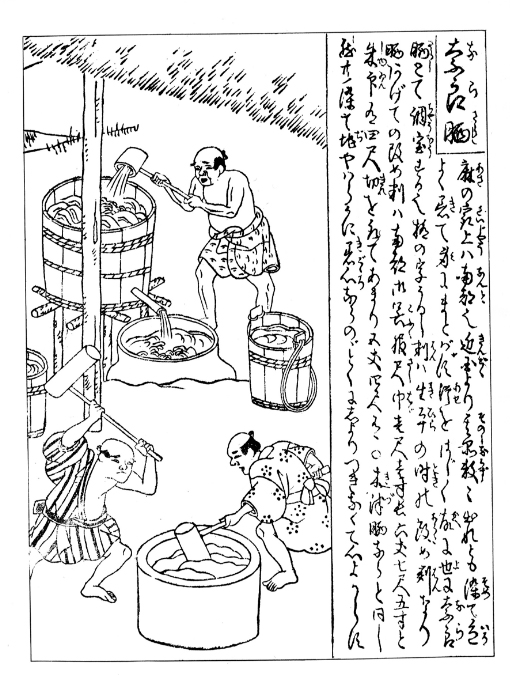
- Sow seeds in spring
- 3-4 months later, when the plant has grown taller than a person, about 2-3 meters in height, harvest by pulling out of the ground root and all
- Cut off the roots and leaves and bundle
- Boil the stem to make it easier to peel the bark
- Hang to dry. The process to this point is already labor intensive
- After the summer Bon season, splash water onto the dried fiber, cover with grass, and let ferment
- Peel the now-soft bark and remove the fibers
- Pick the fibers into fine pieces and spin into thread (twist with fingers.) The task is done during spare time in between farm work, which means that it takes 3-4 months to finish 1 roll (10 meters.)
- Use spun thread to weave into cloth
- Soak woven cloth in lye water
- Hammer cloth with Kinuta and hang in sun. Repeat Tasks 10 & 11 dozens of times.
- 春に種を蒔く
- 3〜4カ月ほど、人の背丈を超えて2〜3メートルの高さになるころ、根もとから引き抜いて収穫する。
- 根を切り落とし、葉を切り落として、束ねる。
- 皮を剥がしやすくするために、茎をゆでる。
- 干す。ここまでも、大変な重労働。
- お盆をすぎたころ、乾燥させた繊維に水をかけて草などで覆い、醗酵させる。
- やわらかくなった皮を剥ぎ、繊維を取りだす。
- 繊維を細く取り、糸を績み(指で縒る)繋ぐ。農作業の合間にこの作業を行い、一反分(10メートル)仕上げるのに3〜4カ月かかる。
- 績んだ糸を使い、布に織り上げる。
- 織り上げた布を灰汁水に浸す。
- 砧打ちにし、天日に干す。10〜11の作業を何十回と繰り返す。
日本植物布むかし話
Folktale of Japanese Cloth Made from Plants
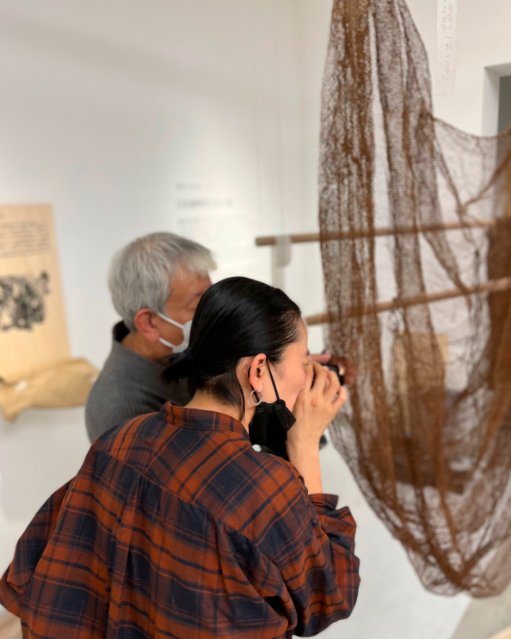
古来の暮らしと植物布
Ancient Living and Plant Derived Cloth
吉田真一郎さんが30年にわたり蒐集してきた、植物からつくられた古布たち。よくよく観察して、感じてみてほしい。私たちが普段からよく目にする“収穫された植物”の姿だけではなく、種からはじまり、糸となり布となる—その長いプロセスすべてを知ろうとすることで見えてくる未来の景色。
For over 30 years, Shinichiro Yoshida accumulated a collection of old cloths made from plants. Please look at them closely and feel their story.
When we give the extra effort to learn about the long process of a familiar plant, not just at its harvest, but from its beginning as a seed until it turns into thread and cloth, we start seeing an image of what the future could be.
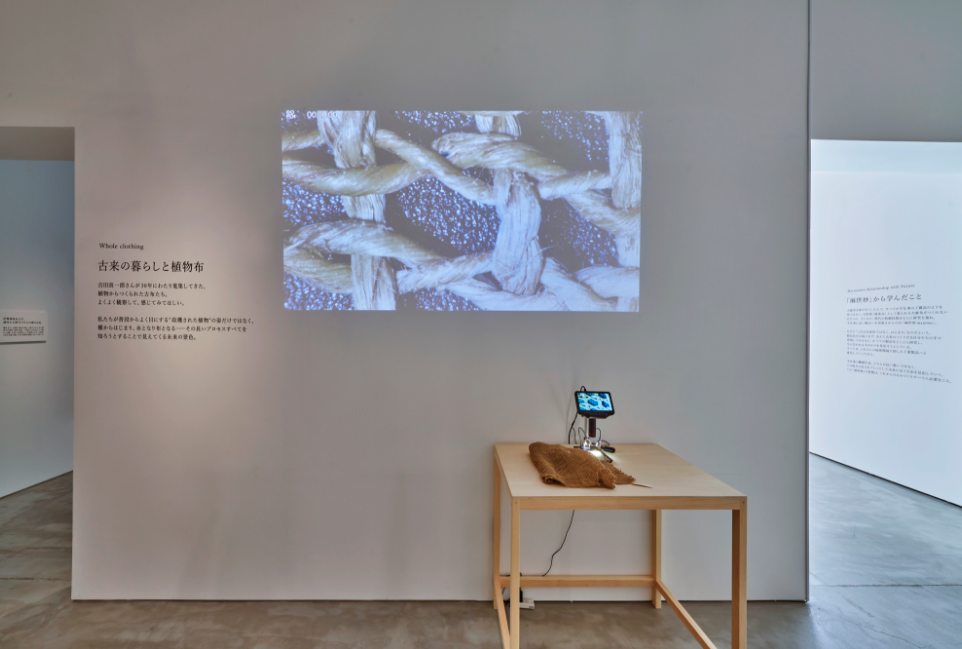
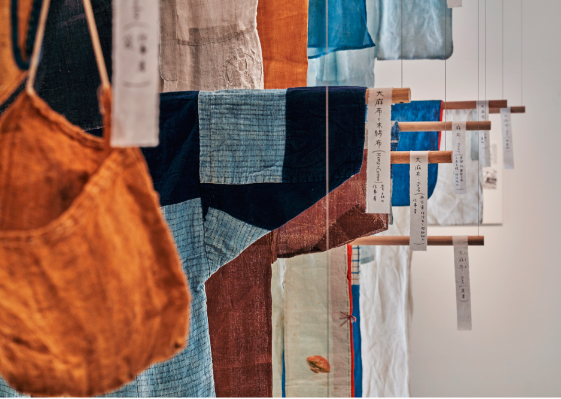
For approximately 10,000 years, for an unimaginably long period of time, before the early Jomon Period. Japanese people invested incredible effort and time in spinning thread and making clothes from the trees and plants growing around them. Cotton was not mass produced until only recently around the Edo Period.
Till then, people handmade many of their daily necessities from different plants and bartered, which meant there was little need for cash. All of the plant derived cloths lined up here were created in different regions across Japan. Each cloth has a different characteristic that highlights the difference in the climate of each region. What is especially intriguing is that people used their wisdom to make use of every part of a single plant, using some parts for “clothing” and others as “food.”
This is a great reminder of the “mottainai” spirit.
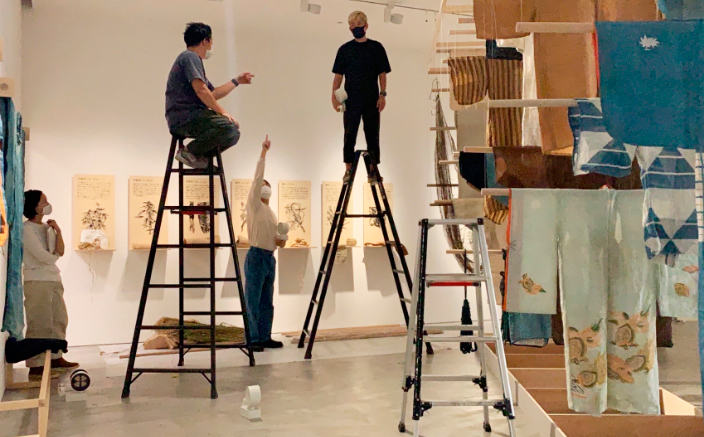
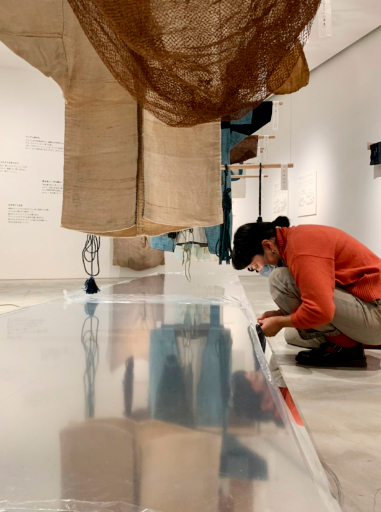
縄文時代前期から約1万年という、果てしなく長い間。
日本人は身の回りに自生する樹木や草から、ものすごい労力と時間をかけて糸を績み、衣服をつくっていた。木綿(コットン)が大量生産されるようになるのは、江戸時代に入ってから。わりと最近のことだ。それまでは、さまざまな植物から生活必需品の多くを自分たちの手でつくり、換していたからお金もさほど必要なかった。
ここに並ぶ、植物から生まれた布たちはすべて、日本各地いたるところでつくられていた。その土地によって気候風土が異なるので、地域ごとの特徴もある。
特に惹かれたのは、ひとつの植物でも部位によって、「衣」にしたり「食」にしたりと、すべてを生かしきるという知恵。「もったいない」という言葉が、自然と浮かんできた。
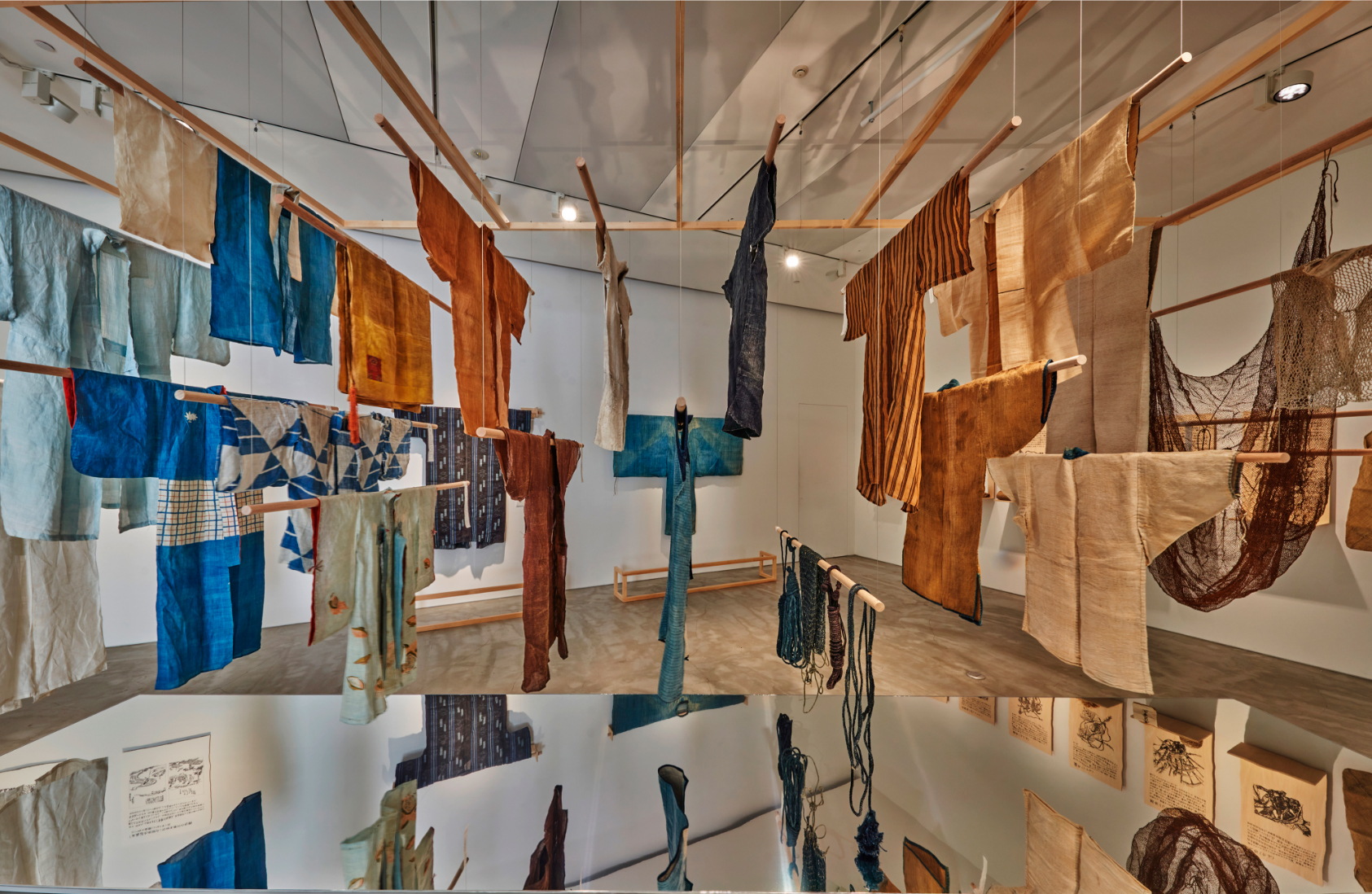
きっとここが向かうべき場所
This must be the Place.
袍衣(ほうい)
“Houi”.
東北地方で寒い季節に、暖をとるため使われていた蚊帳
“Kaya (mosquito nets)” were used for securing warmth during the cold seasons in the Tohoku region.
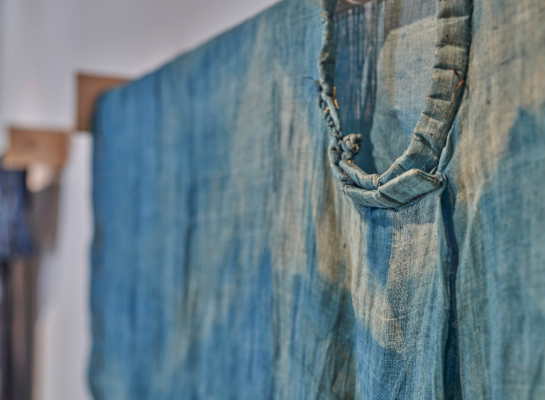
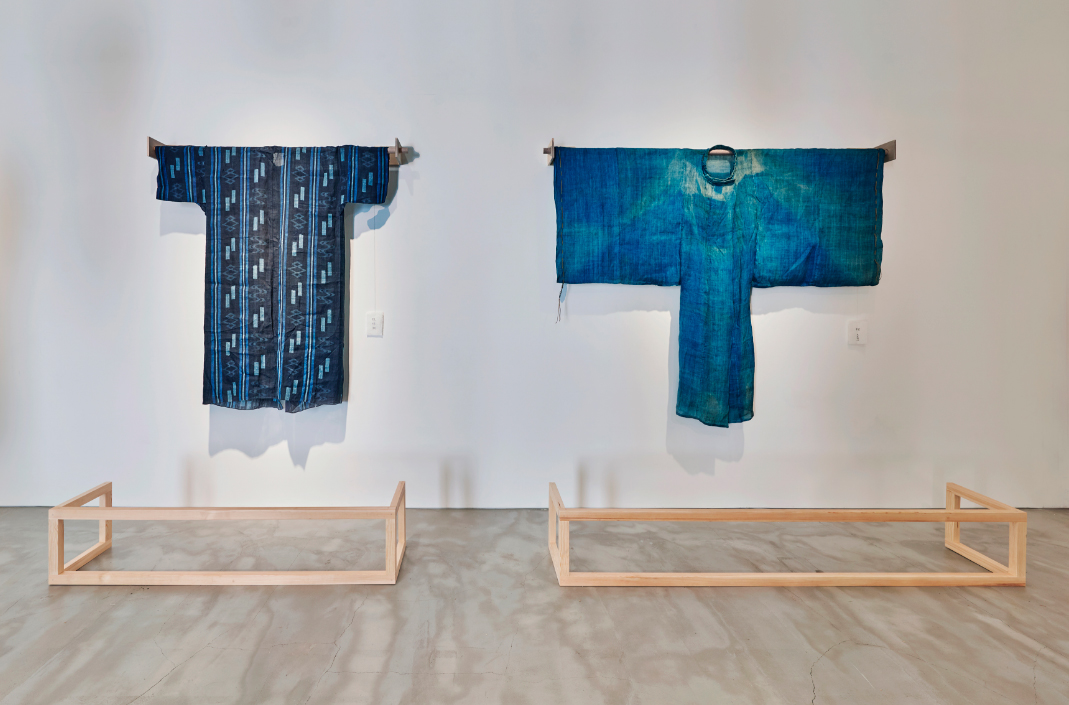
伊勢神宮および、
諸社から授与される大麻のお札
Shrine amulets distributed by
Grand Shrine of Ise and other shrines
現在まで、全国の神社を通して授与されてきた神宮のお神札「神宮大麻」。大麻は「おおぬさ」とも読み、お祓いに用いる祭具のことを意味します。大麻は、けがれを祓う霊力のある神聖な植物とされてきました。
The “Jingu Taima” talisman is distributed to this day through the Grand Shrine of Ise and other shrines throughout Japan. Also read “oonusa”, these are ritual items used for warding off bad spirits. “Taima” or hemp, was regarded a sacred plant with the power to drive away and cleanse the impure.
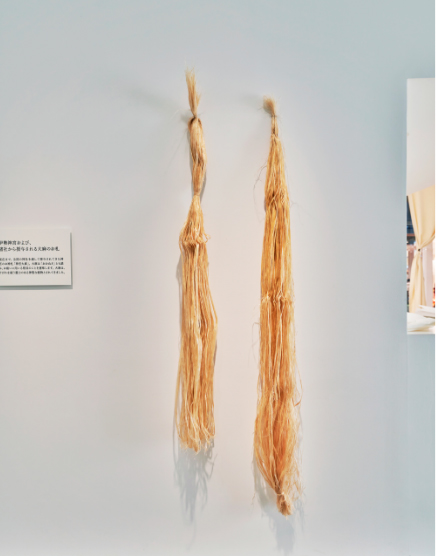
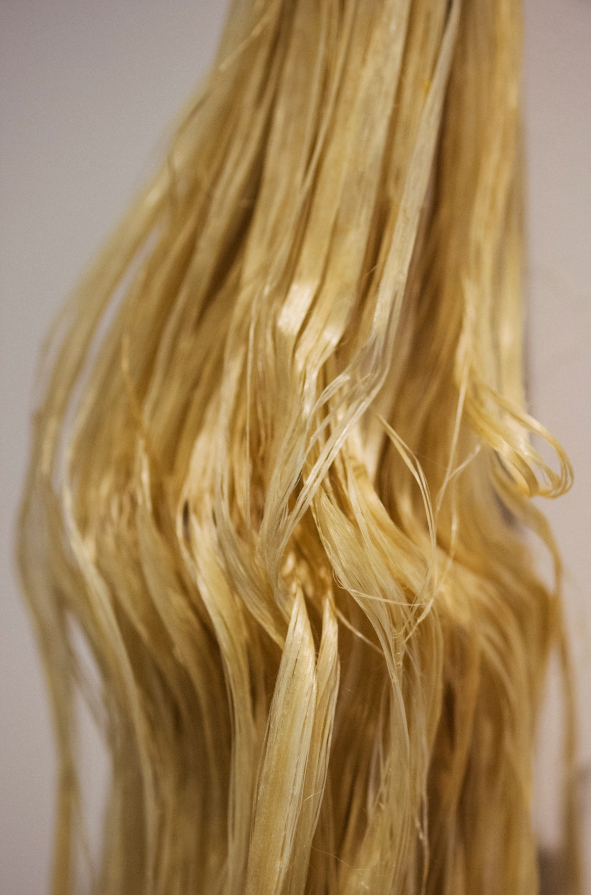
「Roots」ビデオ 03’59”
撮影・編集 エイベックス・エンタテインメント
“Root” Video 03’59”
Camera/Editing: Avex Entertainment Inc.
* 「麻世妙―majotae」
美術家で近世麻布研究所所長の吉田真一郎氏が、かつての日本において特別な布であった大麻布を今に甦らせるべく、現代の紡績・製織技術のもと完成させたファブリック・ブランド。
* ”majotae”
Fabric brand led by Shinichiro Yoshida, Artist and Director of the Early Modern Asafu (Hemp Cloth) Laboratory, created to take Taima-fu, a once special cloth in Japan, and revive in in a modern context through current spinning/manufacturing techniques.
The reason why “clothing” comes before “food” in “ishokuju.”
When people made cloth by hand from plants, they probably considered it an act of “wearing plants” directly on their skin.
The very beginning of “ishokuju” started from “clothing” (plants) that protected people from outside enemies.
Right around the same time, we discovered Taima-fu.
In Japan, plant fiber known as hemp has been a part of people’s lives since more than 10,000 years ago.
As clothing, as medicine, as food, and as a sacred tool in religious rituals.
Who would have guessed that back then, hemp (cannabis) was not for smoking but a plant for protecting lives.
「衣食住」の「食」よりもまず、「衣」がはじめにある理由。
植物から手仕事で布をつくりだしていた頃には、肌に直接、“植物をまとう”感覚があったはず。
「衣食住」の始まりの始まりは、外敵から命をまもる「衣」(植物)だった。
そう思い始めた矢先、大麻布との出合いがあった。
日本では、はるか1万年前から生活に取り入れられてきた、大麻という植物繊維。
衣服として、医療品として、食品として、神事における神聖なものとして。
意外や意外、大麻は吸うものではなく、命をまもってくれる植物だったのだ。
食と植
Food and Plants
We were handed an old piece of cloth from Shinichiro Yoshida.
He told us that it was a precious cloth that would usually be stored securely in a glass case in a museum. It was daily wear made by ancient people using thread handspun from plants and woven into cloth.
He told us that it’s called “Taima-fu (hemp cloth.)” As we listened to stories of the times when this cloth was born with the feel of the cloth right in our hands, images of ancient sceneries started taking shape in our minds.
In Japan, people refer to the essentials of life as “ishokuju (clothing, food, shelter)” but when translated into English, the order is changed to “food, clothing, and shelter.” …which puzzled us.
Shouldn’t “food” be at the top of the list for man’s survival?
Then why, in Japanese, is “clothing” put before “food”?
“Taima-fu” taught us why.
Exploring the ways of life when plant-derived cloth was a part of daily life helped us uncover scores of hints for the future that had gone unnoticed until now.
Yuri Nomura ⁄ Yukari Iki
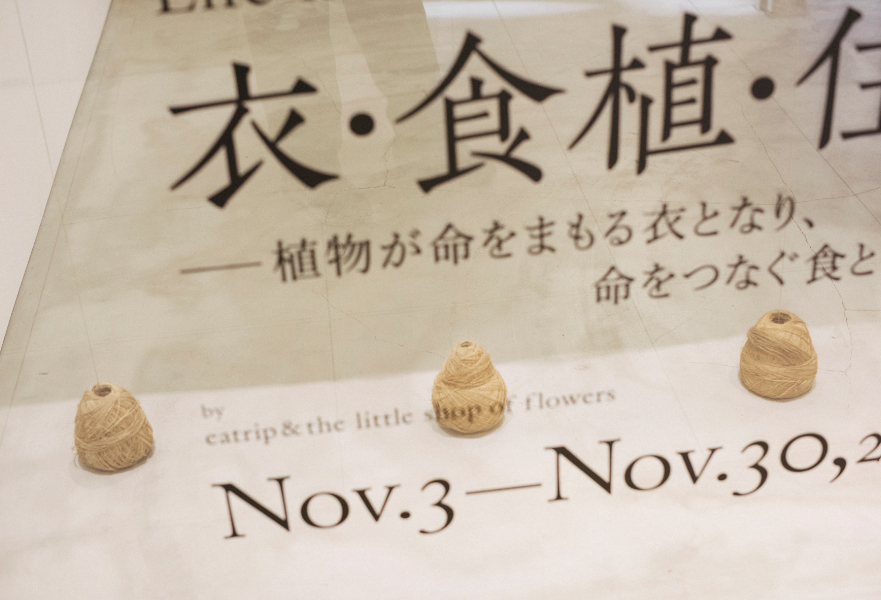
吉田真一郎さんから手渡された一枚の古い布。
それは本来、美術館だとケースの中にしまわれて、触れることのできないような貴重なもの。
古来の人々が、自らの手で植物から糸を績み、布にし、仕立てた日常着だ。
これは「大麻布」だと。この布が生まれた当時のことを聞くうちに、
手の感触を伝って脳裏にその情景が浮かんできた。
人が生きるために必要不可欠なもののことを、
日本では「衣・食・住」という言葉で表してきた。
これが、英語に訳されると「Food , Clothing , and Shelter」という順になるそうだ。
だから余計に、ずっと不思議だった。
生きていく上での優先順位は、まず「食」ではないだろうか。
なぜ「食」よりも「衣」が前に置かれているのだろう。
その答えを教えてくれたのが、「大麻布」だった。
植物からつくられた布、それが日常に生きていたころの営みに思いを馳せると、
私たちがまだ気づいていない未来へのヒントがたくさん眠っていた。
野村友里・壱岐ゆかり
2021年11月に開催した「衣・食植」展。本展では、美術家で近世麻布研究所所長の吉田真一郎氏が、かつての日本において特別な布であった大麻布を今によみがえらせるべく、現代の紡績・製織技術のもと完成させたばかりの「麻世妙(まよたえ)―majotae」との出合いから、人間の生きる基盤である「衣食住」の「衣」と「食・植」にフォーカスしました。「植物は時に衣となり、時に食となって人の命をつないできた」。この2人の視座から、植物をもとに繰り返されてきた古来の営みを眺め、向かうべき新たな「衣食住」へと想像を羽ばたかせる場としての展覧会です。
The ”Clothing, Food & Plants” exhibition was held in November 2021. The idea of this exhibition was spurred by the discovery of “majotae”, a cloth made from a modern spinning and weaving technique newly created by Shinichiro Yoshida, artist and director of the Early Modern Asafu (Hemp Cloth) Laboratory, in his mission to revive hemp cloths that were once regarded as precious in Japan. This encounter with “majotae” takes our focus to the “clothing” and “food/plants (both pronounced “shoku” in Japanese) of “clothing, food, shelter.” “Plants have allowed for the survival of the human race by serving as clothing at times and food at others.” This exhibition takes this idea of the two women and reflects on the ancient ways of life revolving around plants while also looking forward, unleashing our imaginations, on how we can conceive of new ways of “clothing, food, and shelter.”

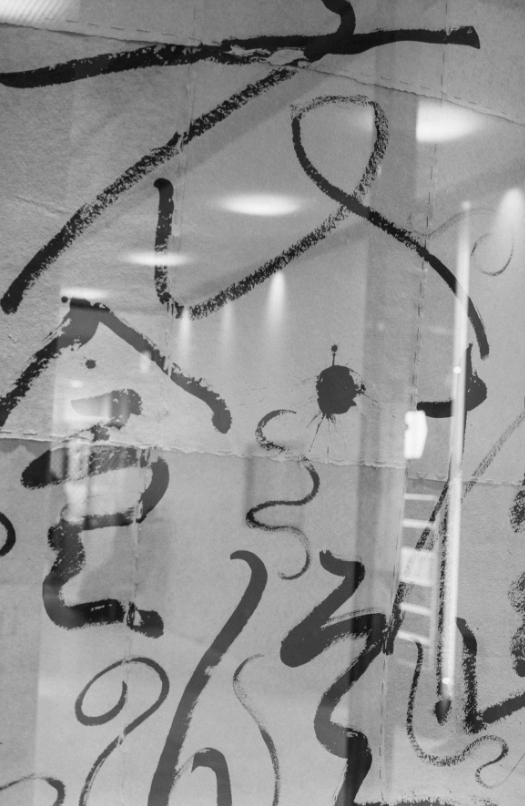
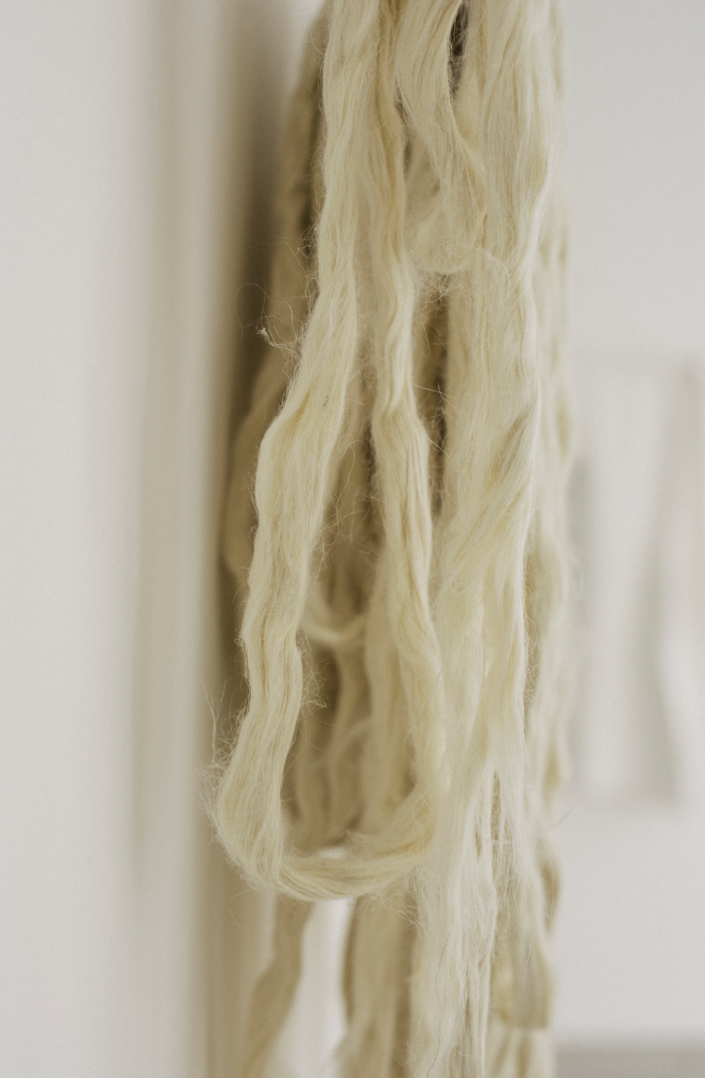
苧麻布(ちょまふ)
Choma-fu (Ramie Cloth)
大麻布と並び、日本の麻として長く日本人に親しまれてきた苧麻布。もともとは身分の上下にかかわらず上着や肌着に仕立てて着られていましたが、細く美しい糸で織られた苧麻布は「上布」と呼ばれて身分の高い人たちの夏の衣装として珍重されるように。江戸時代に入り、木綿が普及するようになるまで、苧麻の栽培と布の生産は、量・質ともに頂点を極めました。
Like hemp, ramie is a Japanese hemp that has historically been a close part of Japanese people’s lives. Choma-fu was worn as both an outer and inner garment by all people regardless of social standing but Choma-fu, woven with its fine beautiful thread, came to be regarded a “Jofu (high quality hemp cloth)” and prized as summer attire by people of high positions. Cultivation of ramie and production of the cloth reached its peak in both volume and quality until around the start of the Edo period when cotton became more common.
大麻布(たいまふ)
Taima-fu (Hemp cloth)
はるか縄文時代から日本人の生活を支えてきた大麻布。けがれを祓う神聖な植物とされ、庶民の生活においては自給自足で栽培した大麻で家族の衣服がつくられていました。糸の太さや晒し方などの加減で、風合いが変化することを見出した人々は、薮に入る時は硬い大麻布を防護服に、使い込んでやらわかくなった大麻布を日常着にと、用途に応じて使い分けていました。また、大麻繊維を糸にする工程ででた屑(くず)繊維を捨てずに再利用して編み上げた「オクソザックリ」と呼ばれる仕事着もつくられていました。
Hemp cloth supported Japanese people’s livelihoods since the Jomon Period. While also being a sacred plant said to rid of impurities, hemp was grown by commoners to turn into cloth to be worn by fellow family members. People learned how the look and feel of cloth changes depending on the thickness of the thread or how it is bleached, which led to them choosing the type of cloth based on the purpose. Tough hemp cloth was used for protective wear for working in the bushes while soft worn hemp was used for daily wear. Another type of workwear, a type of upcycling, was, “okuso-zakkuri”, which was made by saving the waste fibers produced when spinning thread and weaving this into new cloth.
紙布(しふ)
Shi-fu (Paper Cloth)
中国から、紙漉きの技術が日本に伝わったのは5世紀ごろ。和紙からつくられた紙布には、2種類あります。ひとつは、漉いた白い和紙を細く切って糸を績み、織り上げたもの。もうひとつは、書き物などに使われたあとの不要になった和紙を、細く切って糸を績み、横糸に織り込み布として再利用したものです。この紙布にも、和紙と同じく、軽くて破れにくい強靭性、吸湿性などの特性があります。主に江戸時代、木綿が貴重だった山村などで、庶民の自家用としてつくられていました。
Paper making techniques were brought to Japan from China around the 5th century. There are two types of cloths made from Japanese paper. The first is a cloth that is woven from thread that has been spun from finely shredded white paper. The other is a type of “recycled” cloth whose weft is made from thread spun from paper that has been written on. The latter cloth, just like its new counterpart, provides an equal level of lightness, durability, and absorption. Shi-fu was made by commoners in rural villages as cloth for the home during the Edo Period when cotton was valuable.
太布(たふ)
Tafu (Paper Mulberry)
高さ5メートルほどの落葉低木である楮(こうぞ)。紙漉きでつくられる和紙の原料としてよく知られる植物ですが、紙漉きが中国から伝わる以前から、糸を績み布が織られてきたため、古代布とも呼ばれています。その用途は幅広く、衣服だけでなく、米や穀物を入れる角袋(つのぶくろ)や風呂敷などの日用品として活躍していました。現在では、徳島県の木頭村に保存伝承会があり、国重要民俗文化財にも指定されています。
Kozo, or paper mulberry, is well known as the ingredient for Japanese paper and is a deciduous shrub that grows to about 5 meters in height. It is also called Kodai-fu (ancient cloth) for its history of having been spun into thread and woven into cloth from before paper-making techniques were brought over from China. Highly practical, paper mulberry cloth was used not only for clothing but for daily items like Tsuno-bukuro bags to store rice and grains or for Furoshiki wrapping cloth. There is a preservation society in the village of Kito in Tokushima Prefecture and the cloth is also designated as an Important Folk Cultural Property.
芭蕉布(ばしょうふ)
Basho-fu (Banana)
日本においては沖縄のみに自生する糸芭蕉から生まれた布。熱帯地方に見られるバナナの実がつく実芭蕉などと違い、亜熱帯に属する沖縄の気候風土に育まれた細くやわらかな繊維が、繊細な布を生みだしました。光沢と透明感があり、風をよく通すため汗をかいても肌にまとわりつかず、さっぱりとした風合い。戦前まで沖縄全土でつくられていた芭蕉布は、第二次世界大戦で途絶え、戦後に伝統文化を守るため有志によって復興されました。
Cloth made from Japanese banana that grows only in Okinawa prefecture. Contrary to banana trees in tropical regions, the Japanese banana grows in the subtropical climate of Okinawa and its fine soft fibers create a delicate cloth. Lustrous and translucent, the cloth is extremely breathable and does not cling even in the presence of sweat. Made all across Okinawa until the pre-war days, the craft diminished during the Second World War and was brought back again by volunteers thereafter.
葛布(くずふ)
Kuzu-fu (Arrowroot)
葛は古くから日本各地に自生するマメ科の植物。蔓を切ったあとにも芽をだし、散った種で新しい芽をだすたくましさがあります。その根は、食用(葛粉)や漢方薬(葛根湯)として、現在でも馴染みのある素材ですが、明治時代以前は、蔓の部分を用いた布づくりも盛んに行われていました。当時の植物布の中でも、特に光沢と品のある風合いを持っていたため、貴族や高級武士、芸能の衣装に使われていました。
Arrowroot, a plant of the legume family, has historically been found all over Japan. Tremendously resilient, it will grow new buds even if cut and also multiply vigorously from seed. Today, the rootstock is known for its edibility and as herbal medicine but prior to the Meiji Period, arrowroot was often used for making cloth. Compared to fellow plant-derived cloths, its brilliant luster and elegance made arrowroot the cloth of choice for attire and costumes worn by nobles, high-ranking samurais, and artists.
藤布(ふじふ)
Fuji-fu (Wisteria)
昔は吊り橋に使っていたというほど強靭な山藤のつる。この樹皮を糸にするまでには、相当な力技と労苦と気力が必要でした。藤布は使い込むほどにやわらかくなり、暖かさも増していきます。山藤は、縄文時代より本州から九州にかけて自生する植物ですが、大樹に巻きついて成長するため、巻き付いた樹木を倒木させてしまうという性質があります。このため、山師たちは山の手入れのため定期的にこのつるを伐採し、伐採したつるを利用して糸をつくりました。
The vines of mountain wisteria are so tough that they were once used as material for building suspension bridges. It takes great strength, effort, and diligence to spin thread from its bark. The more wisteria cloth is used, the softer and warmer it gets. Wisteria is a plant that has grown in the wilds of the Honshu region down to Kyushu since the Jomon Period. It’s tendency to wrap around tree trunks sometimes leads to them strangling the tree to death. That is why arborists would harvest the vines regularly and spin thread from its bark.
「木曽路名所図会」近江野州川の晒/近江野洲布晒図 江戸時代後期(1805年)刊
“Kisoji Meisho Zue (Illustrations of Famous Places Along the Kiso Road)” Hanging cloth along Omi’s Yasu River / Omi Yasu cloth, late-Edo Period (1805)
室町時代以降、滋賀県の琵琶湖東岸一帯でつくられてきた、四大麻布のひとつ「近江麻布」。彦根、高宮が生産中心地であったため、「高宮布」や「近江上布」とも呼ばれてきました。上布とは、細い麻糸から手で織り上げられた上質の麻布のこと。江戸時代には彦根藩から徳川家への献上品とされるほどの布でした。この「野洲布晒図」には、野洲川に麻布を晒す作業風景が描かれています。
“Omi Asa-fu (Omi hemp cloth)” was one of the Big 4 hemp cloths made in and around the eastern shore of Lake Biwa in Shiga Prefecture from the Muromachi Period and onward. It was also called “Takamiya-fu” and “Omi Jofu” given that regions such as Hikone and Takamiya were the production centers. Jofu refers to high quality hemp cloth handwoven with fine hemp thread. The cloth was prized to the extent that the Hikone clan sent this as an offering to the Tokugawa family during the Edo Period. This “Yasu Nuno Sarashi Zu” portrays how cloth was hung alongside the Yasu River.
「東海道名所図会」竹州多摩川の布晒 江戸時代後期(1797年)刊
“Tokaido Meisho Zue (Illustrations of Famous Places Along the Tokai Road)” Hanging cloth along the Bushu Tama River, late-Edo period (1797)
東京、神奈川、山梨をまたぐ多摩川流域は、奈良時代より麻や絹の生産が盛んに行われてきたことから、当時は川沿いで大麻を栽培していたのではないかと考えられています。この絵のように、河川敷では大麻や苧麻の布を砧でたたき、川に晒す作業が行われていたことが想像されます。世田谷区の「砧」という地名は、この名残であると言われています。
The Tama River basin that crosses over Tokyo, Kanagawa, and Yamanashi was known for its production of hemp and silk since the Nara Period, leading to theories that people most likely bred hemp along the riverside in those days. As seen in this work of art, people along the riverbed hammered hemp and ramie and washed the cloth in the river. The region named “Kinuta (hammer)” in Setagaya Ward is thought to be a remnant of that history.

